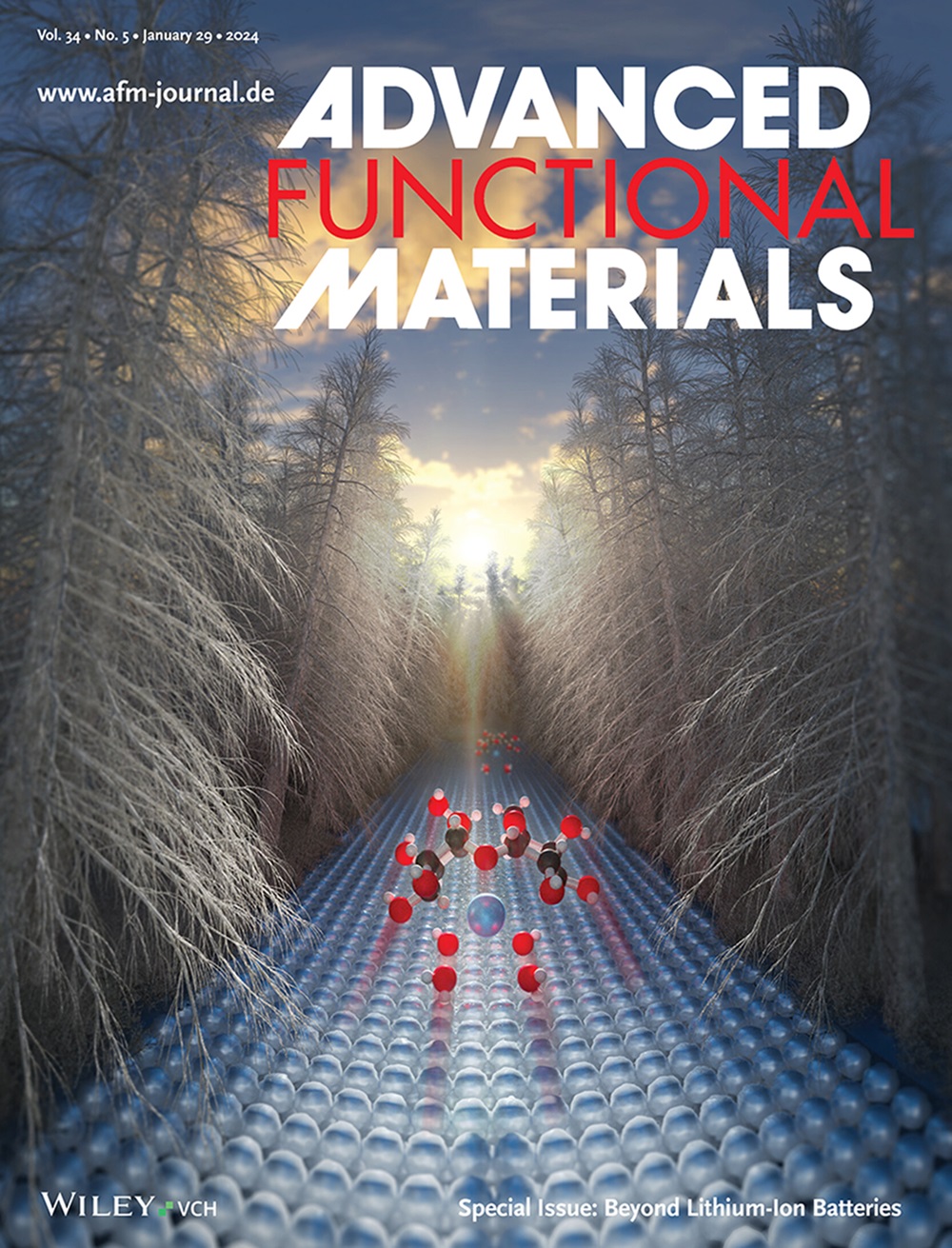Hydrogen‐Bond Acceptor and Anion Receptor‐Mediated Regulation of Interfacial Proton Mobility for Long‐Lifespan Aqueous Zinc Batteries
IF 19
1区 材料科学
Q1 CHEMISTRY, MULTIDISCIPLINARY
引用次数: 0
Abstract
Continuous interfacial hydrogen bonds network facilitates efficient proton transfer from the bulk electrolyte to the electrode surface, which exacerbates hydrogen evolution reactions (HER) and accelerates zinc corrosion in aqueous zinc‐ion batteries. Here, a dual‐modulation aqueous electrolyte is designed by incorporating a hydrogen bond acceptor, dimethylacetamide (DMA), and an anion receptor, benzyl alcohol (BA), to simultaneously improve zinc anode reversibility and stabilize the manganese ferrocyanide cathode. DMA disrupts interfacial H‐bond networks via its carbonyl group, hindering proton transport through the Grotthuss mechanism. Meanwhile, BA anchors OTf⁻ anions through hydroxyl‐mediated hydrogen bonding, promoting their selective decomposition into species that form a uniform, electron‐blocking solid electrolyte interphase (SEI) on the zinc surface. This SEI suppresses HER by preventing electron transfer to free water, enabling efficient zinc plating. The Zn||Zn symmetric cell achieves a lifespan of 4000 h (2 mA cm⁻氢键受体和阴离子受体介导的长寿命锌水电池界面质子迁移调节
连续的界面氢键网络促进了质子从本体电解质到电极表面的有效转移,从而加剧了析氢反应(HER),加速了锌离子电池中锌的腐蚀。本文设计了一种双调制的水溶液电解质,通过加入氢键受体二甲基乙酰胺(DMA)和阴离子受体苯甲醇(BA),同时提高锌阳极的可逆性和稳定锰亚铁氰化物阴极。DMA通过羰基破坏界面氢键网络,阻碍质子通过Grotthuss机制传输。与此同时,BA通过羟基介导的氢键锚定OTf -⁻,促进它们选择性分解成在锌表面形成均匀的、电子阻断的固体电解质界面(SEI)的物质。这种SEI通过阻止电子转移到自由水中来抑制HER,从而实现高效的锌电镀。锌||锌对称电池的寿命为4000小时(2毫安厘米毒血症,1毫安厘米毒血症),在恶劣条件下的寿命为2300小时(10毫安厘米毒血症,5毫安厘米毒血症),远远超过传统的电解质。此外,控制质子可用性还可以减轻Mn/Fe的溶解,将Zn b| MnFe(CN)6电池的循环次数提高到5000次,容量保持率为82.0%,库仑效率超过99.4%。这种协同方法为稳定水系统中的锌阳极和阴极提供了一种有希望的途径。
本文章由计算机程序翻译,如有差异,请以英文原文为准。
求助全文
约1分钟内获得全文
求助全文
来源期刊

Advanced Functional Materials
工程技术-材料科学:综合
CiteScore
29.50
自引率
4.20%
发文量
2086
审稿时长
2.1 months
期刊介绍:
Firmly established as a top-tier materials science journal, Advanced Functional Materials reports breakthrough research in all aspects of materials science, including nanotechnology, chemistry, physics, and biology every week.
Advanced Functional Materials is known for its rapid and fair peer review, quality content, and high impact, making it the first choice of the international materials science community.
 求助内容:
求助内容: 应助结果提醒方式:
应助结果提醒方式:


